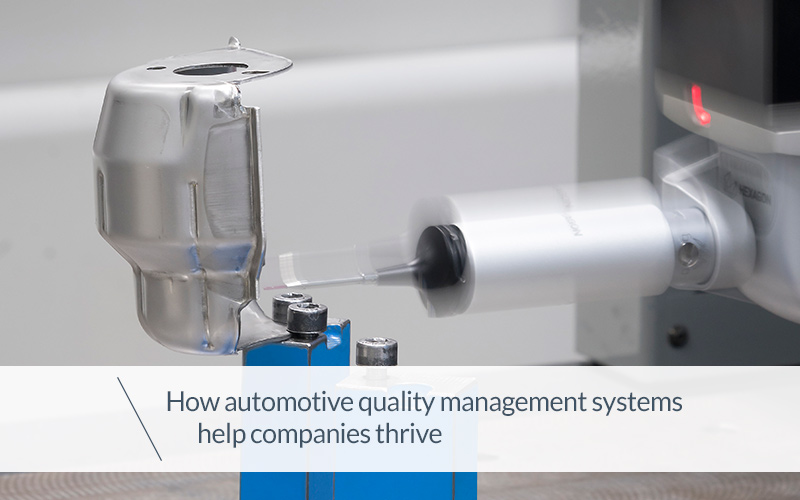Why is quality control focused on safety so important in the automotive sector?
Qualitative standards applied to the production of goods in almost all industrial sectors have increased over the decades, becoming more and more sophisticated and strict.
This process is extremely important in a sector such as the automotive one, where safety concerns not only the person who happens to be driving the vehicle, but also the others road users, such as pedestrians, cyclists and other drivers.
Ensuring that high safety standards are adhered to during vehicle production does not only create advantages for the consumer (who will obviously drive safer cars), but also for manufacturers.
Indeed, whilst reaching such high qualitative standards represents big design and production challenges, over and above incurring short-, medium- and long-term costs, it is also true that the process is more than profitable for manufacturers. Approaches to quality management such as the Six Sigma program have statistical implications that go well beyond the qualitative eradication of customer-perceptible defects.
The objective of Six Sigma quality is to reduce process output variation so that on a long term basis, which is the customer’s aggregate experience with our process over time, this will result in no more than 3.4 defect parts per million (PPM) opportunities (or 3.4 defects per million opportunities – DPMO).
At FAIST, working also for the automotive industry, we apply those strict procedures and approaches to all the products we make, not only the ones that are going to be fitted onto vehicles. No matter the industry in which they will be employed in, we ensure the best possible quality of our components following precise engineering and productive practices, and an adhering to an extensive quality management system.
Quality is high even when it is not easily identifiable
For most consumers a vehicle is simply a tool with a specific function: transporting people from A to B. Let’s dig deeper into what does putting a new car model on the road mean for a car manufacturer and its suppliers.
Very few people actually pay attention to the manufacturing processes, which occur before the vehicle is allowed on the road, or to understand the technologies used to increase safety inside the vehicle or indeed to appreciate the various mechanical and electrical aspects.
At best, consumers link quality control and the safety of a vehicle to the traditional crash tests, often shown spectacularly in slow motion.
Yet, these super-popular tests are actually the end step of a quality control process that started way before. So, even if unnoticed, the quality of the vehicles in which we all travel each day has considerably increased over the years, and this has been made possible by quality checks, and required standards, that are extremely strict.
Quality control kicks off early in the process
It is obviously fundamental to subject vehicles to a series of stringent quality checks to reach appropriate safety levels. All this evidently kicks off way before the presentation of new vehicles to the press and to the market, in the design phase.
The vehicle that we see in the showroom is the very last step in a long process, including simulation and preventive analysis of potential issues, up to the creation of prototypes, which go through rigorous stress tests. In this way, it is possible to identify defects and mechanical (or other type of) problems, and take action.
The tests are conducted in labs, where on-road impact conditions are replicated to check, for example, the reaction of components to speed, acceleration, road traction and corner traction, and on the road itself to measure the vehicle’s ability to hold up to daily stresses such as traffic, heat, cold etc.
The product that reaches the market is, therefore, the very best version according to the technology available at the time.
Producing safe cars also benefits the manufacturers
Undergoing a precise design phase, creating prototypes, putting them under stress tests, implementing corrections and improvements, and starting over, undeniably carries high costs for the manufacturers.
Despite this, it is amply shown that a rigorous and accurate pre-sale phase for the vehicle in question and any of its components allows a safe product, with obvious economic, management, organisational advantages, plus a sound reputation, to reach the market.
On the contrary, the history of automotive production shows how much a recall for a poorly engineered or tested component can be detrimental for companies. Conducting more strict quality checks and increasing investments, paradoxically, is actually an excellent cost control exercise, and for us at FAIST, a must long since.




